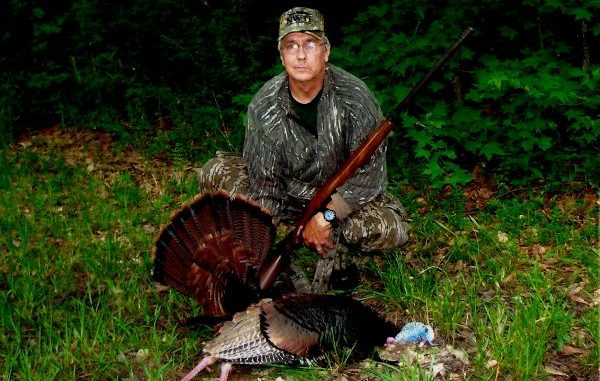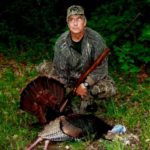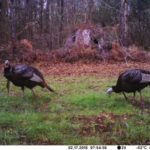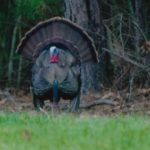
There is no better feeling of accomplishment than putting a bagging an adult tom. Here’s everything you need to know to close out the season with a bang.
If a survey was taken of all deer hunters in Louisiana and their method for hunting deer, I suspect the most-common way is to sit in a permanent box stand waiting for a deer to walk out into a food plot or visit the corn feeder.
I could be wrong, but I don’t think so.
Get in a helicopter and fly over the rural landscape of private lands, and I suspect you will see what I have seen on many occasions — lots of box stands sitting on pipe lines, woods roads and the edges of pastures, fields and food plots.
It is just the normal way to hunt deer on private lands. Set up in an area that has something to attract deer and wait for the deer to come.
While this plan will work, have a year when there is an abundance of acorns and many might have to alter the plan if venison is desired for the freezer.
Now, survey that group of hunters who pursue wild turkeys about their method of hunting, and chances are you won’t have many who build permanent box blinds and wait for gobblers to come to them.
Unless, of course, they disregard the regulations concerning hunting turkeys over bait or they only own a few acres of land surrounded by other private land with turkeys and can hunt only on their small tract.
Turkey hunting and deer hunting are definitely different activities.
Tom Kelly, author of the book Tenth Legion, considered deer hunters to be on the low end of the hunting totem pole, while turkey hunters were in that elite group at the top of the pole.
The white-tail buck won’t sound off in the morning to let the hunter know where he is, so the hunter sits and waits at a location that he thinks (or hopes) a buck will show up.
The crafty gobbler, on the other hand, will sit in the top of a tree and announce to the entire world where he is and dare the hunter to come and get him.
Once you have heard a tom gobble, have chased after him in pursuit, had him answer your love calls and perhaps tasted victory, it is hard not to have a desire to go back and do it all over again.
Most deer hunters who put a deer or two in the freezer during the season, generally have had enough of the logistics involved with deer hunting, don’t worry about tagging out and are ready for other things.
It is the turkey hunter who has that inward burning desire to attach that second tag to another longbeard — so the pursuit continues for the entire season.
The season opened on March 28 in all of the three regions of the state. There is a reason for this: Our turkey population in Louisiana is somewhat limited, so the Louisiana Department of Wildlife and Fisheries does not want hunters jumping around the state going from one area to another, like deer hunters do during that season.
Turkey hunters have to decide where they are going to hunt on opening day, without the luxury of going from one area to another if the seasons opened on different weekends as they have in the past.
Some hunters in the state like the season to open as early as possible; many like the Mississippi turkey season that always opens on March 15.
Of course, the turkey population in Mississippi is much greater than the one in Louisiana, so the state can afford to open early.
Louisiana’s wildlife biologists open our season so a majority of hens would be bred before gobblers are harvested.
But many hunters are not concerned with biology — if the toms are gobbling the season should be open.
I have always liked a season that runs as late as possible. The reason is simple: Once hens are nesting, they stop going to the toms and that means gobblers have a tendency to come to you because they still have a strong affection for the ladies.
As long as a live hen is with them they aren’t too concerned about a hen in the bushes that they cannot see.
Gobbling activity in North Louisiana seems to occur a little later than, say, in the Florida Parishes, so hunters up there tend to like a later season, also.
Some hunters would also like to see a split season: open the season when the gobbling begins, close it for a week or so after two weeks of hunting, and then open it back up. This season structure does have merit and might be worth experimenting with in Louisiana.
Area A has the most days of hunting at 30, and that reflects the fact that the region has the highest turkey population in the state.
Area B has a 23-day season, while Area C has a short 16-day season.
Area C has the shortest season because it is the area in the state that will frequently flood, which causes problems for the population (turkeys nest on the ground and the nests generally do not float).
Our public lands do not have the same season dates as private lands, and many of them operate under a lottery hunt system. So it is important that you read pages 44-48 of the 2014-2015 Louisiana Hunting Regulations Book, as well as pages with the wildlife management area and Kisatchie National Forest turkey regulations (pages 54- 111).
You will have to contact the US Fish and Wildlife Service regarding turkey hunting dates and regulations on the national refuges.
Only male turkeys can be harvested.
The annual turkey kill consists primarily of adults because that is what the seasoned turkey hunter wants. Let the jakes (1-year-olds) grow up and become adults.
However, there is nothing wrong with shooting a jake, particularly if you have never killed a turkey. Since jakes are young and have not played the game before, they are not as challenging as an adult gobbler.
Hunting is the primary factor that regulates gobbler numbers in a population; predators will catch adult turkeys, but it is not an easy task.
Consequently if a hunter passes on a jake, chances are good that the tom will be around for the next season.
Louisiana does not have the large tracts of forested land that can be found in some of the other Southeast states; consequently our population of wild turkeys is not as high as Mississippi or Alabama.
Urban sprawl has taken its toll in rural parishes surrounding our larger cities. For example, following Hurricane Katrina the Florida Parishes along the Lake Pontchartrain north shore saw a dramatic increase in human population across the rural landscape — and wooded habitat in this area became very fragmented.
The same thing has happened around Baton Rouge and Shreveport.
Fragmented forest habitat does not help the wild turkey. In this situation, a season that is late and allows for maximum breeding of the hens prior to shooting gobblers should help increase turkey numbers.





